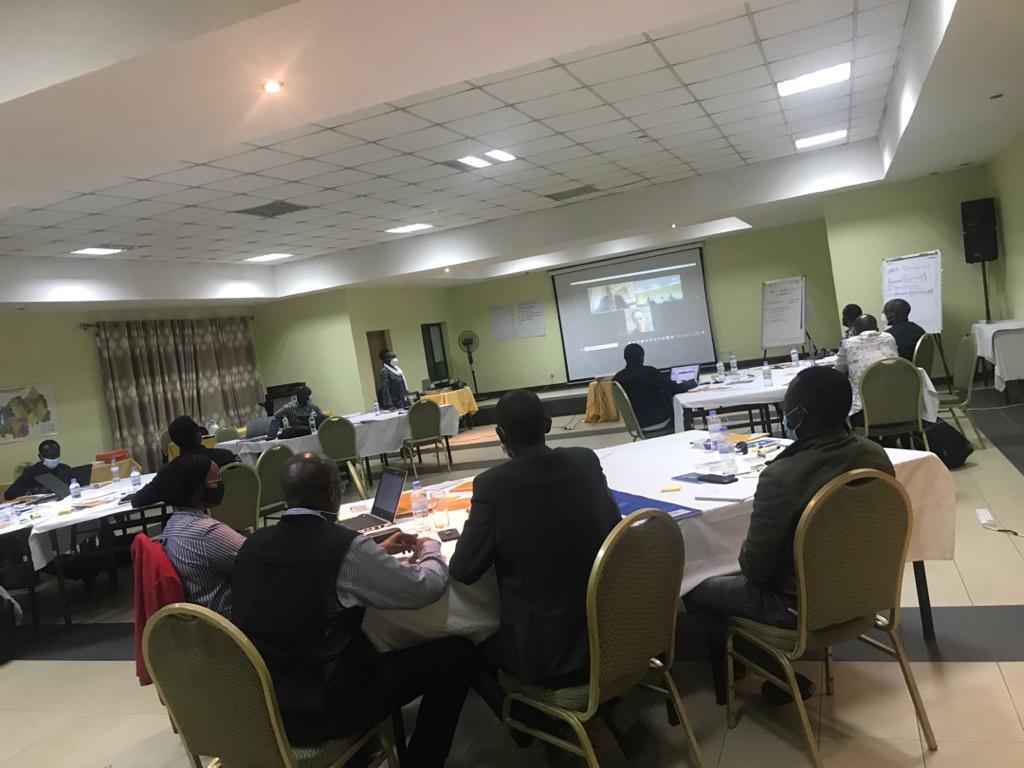In Rwanda, HIV/AIDS is a mixed epidemic, generalized in the adult population with an HIV prevalence rate stabilized at 3% (RPHIA 2018–2019). The epidemic is also concentrated in some groups, especially among Female Sex Workers (FSW) population with 45.8% prevalence with a high prevalence among FSW operating in Kigali (55.5%). HIV is almost two times higher among women (3.7%) than men (2.2%). Rwanda is implementing HIV combination interventions to reduce the number of new HIV infections in both general and key populations. Condom programming is one of the comprehensive packages of HIV prevention.
Since November 2020 through the UN Joint Team on AIDS, UNFPA has partnered with RBC to undertake the condom situation analysis and condom strategic plan development. Through this activity, UNFPA in partnership with RBC and different partners have completed the Results Framework with strategic priorities, outputs, and interventions. This resulted to a vision for how the condom market will become healthier over 5 years and what will be done over the first 12 months. As key priorities to improve condom supply, demand and condom stewardship and leadership. The three-day Condom Design Workshop conducted in Musanze in April 2021 in collaboration with different partners has been an opportunity to outline the monitoring, evaluation and a program improvement (ME&PI) plan.
Building upon a 2017, global level, UNFPA commissioned study showing that additional investment in high burden countries by 2030 would meet all unmet demands for family planning, as part of a package of contraceptives, and 90% of condom needs for HIV and STI prevention among high-risk groups. This could prevent 700 million STIs, 17 million HIV infections and 420 million unintended pregnancies.
Some people in Rwanda still struggle to understand HIV prevention and treatment. They often face stigma and do not go for regular HIV testing, and very few young people use condoms to prevent HIV. These young people have specific needs and barriers that must be addressed, and communities must be supported to treat and peer-support services for adolescents living with HIV.
UNFPA is concerned by the development of the Population, We could not count on the development if the populations are not protected and Families are not free of the threats. Communities must understand the process of prevention and treatment. They must be supported to the treatment and prevention of any kind of health stigma. We won’t achieve this if we don’t partner with government and Social Society organizations. This may strengthen national health systems, helping ensure greater availability of quality services, equity-focused programmes, and better use of real-time data and policies.
“Access to sexual and reproductive health including family planning and HIV prevention for all women and young people is a human right and critical to saving lives, advancing development and promoting gender equality. It is at the core of sustainable development. UNFPA supports countries’ efforts to ensure that every woman can exercise her right to contraception, safe pregnancy and childbirth, and keep themselves protected from HIV and STIs.” Mark Bryan Schreiner, the UNPFA Representative in Rwanda.
To ensure access and utilization of condoms across Rwanda, three main condoms distribution strategies are being employed: free distribution within the public health facilities, condom sales in private pharmacies, social marketing of condoms allowing access to quality and afforded condoms in existing sales venues and free condoms distribution in condoms kiosks strategically placed in hot spots areas ensure continuous condoms supply to key populations.
The condom situation analysis and strategic plan development was done in four phased processes which includes: The Preparatory phase including mainly organizing a core group, revision and adaptation of tools; The situation analysis, which includes desk review, collection of data, conduction of interviews; and The design workshop which concerns mainly the priority setting and development of results framework, M/E and an operation plan.


